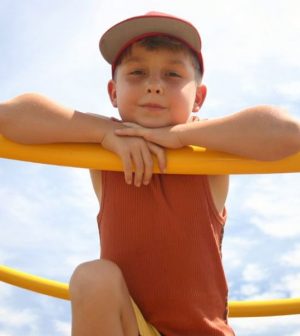- Green Tea + B3 Pairing May Boost Brain Health
- Navigating Your Midlife Crisis: Embracing New Possibilities
- City Raccoons Showing Signs of Domestication
- Mapping the Exposome: Science Broadens Focus to Environmental Disease Triggers
- One Week Less on Social Media Linked to Better Mental Health
- Your Brain Changes in Stages as You Age, Study Finds
- Some Suicide Victims Show No Typical Warning Signs, Study Finds
- ByHeart Formula Faces Lawsuits After Babies Sickened With Botulism
- Switch to Vegan Diet Could Cut Your Greenhouse Gas Emissions in Half
- Regular Bedtime Does Wonders for Blood Pressure
Are Kids’ Playgrounds Really Safe?

The numbers are alarming.
According to U.S. health officials, more than 200,000 children aged 14 or under are treated each year in emergency departments for playground-related injuries, about 10 percent of which involve “TBIs” — or traumatic brain injuries.
Modern playground designs help reduce the risk of injury from falls, but they’re not implemented in every playground in the country. So parents need to be vigilant to keep kids safe.
Standards for safer playground surfaces were established in 1999, yet emergency visits for traumatic brain injuries have gone up significantly in the past decade. While some of this rise could stem from more parents realizing the danger of head injuries and seeking medical attention when a child gets hurt, strategies to reduce the number of playground mishaps are needed.
First, know where the greatest dangers are. Monkey bars, playground gyms and swings are the pieces of equipment most frequently associated with cases of traumatic brain injury. Kids between the ages of 5 and 9, and boys in general, have higher injury rates and may need more supervision when using the equipment.
When choosing a playground to take your kids to, pick those that are surfaced with shock-absorbing material, such as hardwood mulch or sand. Make sure your kids use only equipment appropriate for their age, with guardrails to help prevent falls, and that the equipment is in good condition. Also, check the play area for any tripping hazards, like rocks or tree stumps.
Since accidents do happen, also know the signs of a traumatic brain injury.
TBI Signs in Kids:
- Appears confused or dazed.
- Moves clumsily.
- Is slow to respond to questions.
- Loses consciousness, even briefly.
- Shows mood, behavior or personality changes.
- Can’t recall what happened before or after the fall.
More information
See how your state’s playgrounds stack up from a safety point-of-view by checking out the playground scorecard from the National Program for Playground Safety.
Source: HealthDay
Copyright © 2025 HealthDay. All rights reserved.










